If this is your first time building a dropshipping website, refer to the article below. It will guide you through using Shopify to design a store with the products you want to sell. In this Shopify dropshipping guide, we will explain what Shopify dropshipping is, how to start your own dropshipping business on Shopify, and some promising strategies to market your business effectively.
What is Dropshipping on Shopify?
Before diving into what Shopify dropshipping is, let’s start with the term Dropshipping. Dropshipping is a form of online selling that skips the shipping process. Shopify is a platform that helps you design an e-commerce website integrated with various sales-supporting functions, such as online payments, order management, sending messages, and emails to customers.
Therefore, Shopify dropshipping is essentially the practice of online dropshipping with the support of the Shopify e-commerce platform.
Is Shopify Good for Dropshipping?
Launched in 2006, Shopify dropshipping has built over 1 million professional and convenient online stores to date. We can easily recognize the advantages of this dropshipping model with Shopify, which are:
Bring Significant Profits
Shopify’s dropshipping business model can bring significant profits to Shopify store owners. Most people who run dropshipping businesses through Shopify earn an average of $1,000 to $5,000 per month, with the most successful store owners making over $100,000 annually. However, like most e-commerce business models, the profitability of dropshipping on Shopify depends on various factors.

Low Capital Costs
One of the major advantages of dropshipping is the very low startup cost. You don’t need to worry about the costs of purchasing inventory from suppliers, shipping fees, or warehouse rentals. Instead, you can focus on marketing your products and only pay for services if your product is sold. This reduces financial risks and allows you to easily start your business with minimal capital.
User-friendly interface
Even if you’re not a professional designer, you can still create a stunning online store. Additionally, Shopify offers efficient tools for order management, sales, and marketing.

Multi-point connection
Shopify allows you to connect with thousands of suppliers worldwide, giving you a wide range of dropshipping options and the opportunity to promote your products to thousands of different users.
How to Dropship on Shopify
I will guide you step by step so that you can smoothly run your dropshipping business through Shopify.
Step 1: Choose a Name for Your Shopify Dropshipping Store
It’s not just the name of your store; it’s your unique brand. Choosing the right name will be a lever that helps keep customers interested and returning to your store.
Here are some tips for naming your store:
- Keep it under 12 characters and align it with your branding goals.
- Make sure the name is easy to read and remember.
- Avoid or absolutely do not copy names from other brands.
- Try Shopify AI Business Name Generator.
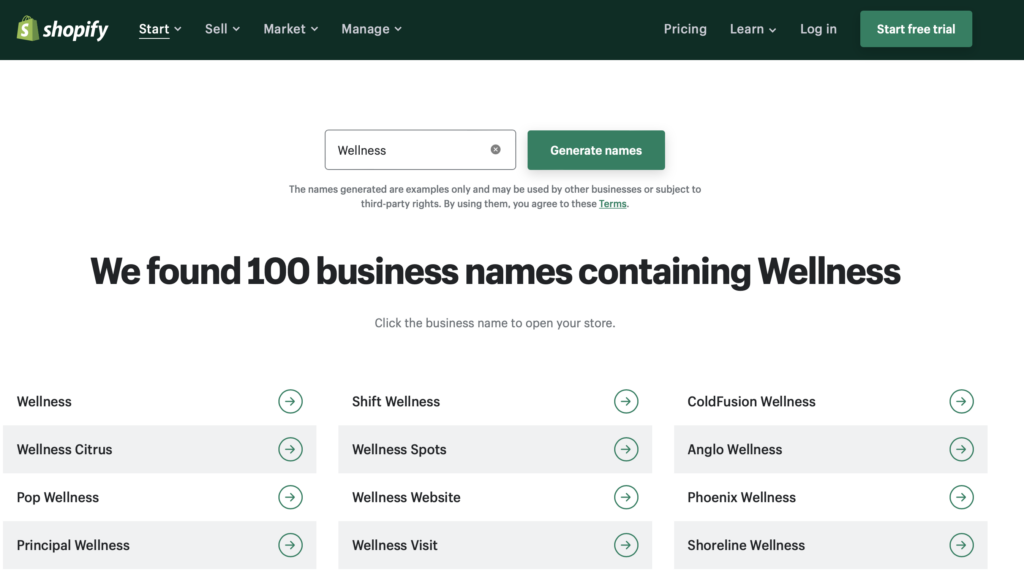
Step 2: Create a Shopify Account
Before you start selling online, you need to create your own Shopify account. You can sign up for a free month trial for just $1 via our referring link.
Next, fill in all the necessary information such as shop name, email, password, etc. You can easily change the shop name later if you wish. Once all the steps are completed, click “Create Your Store.”
Right after that, you will see a screen that says “Tell us a little about yourself.” Select the most appropriate answers and click “Enter my store” to complete the account registration.
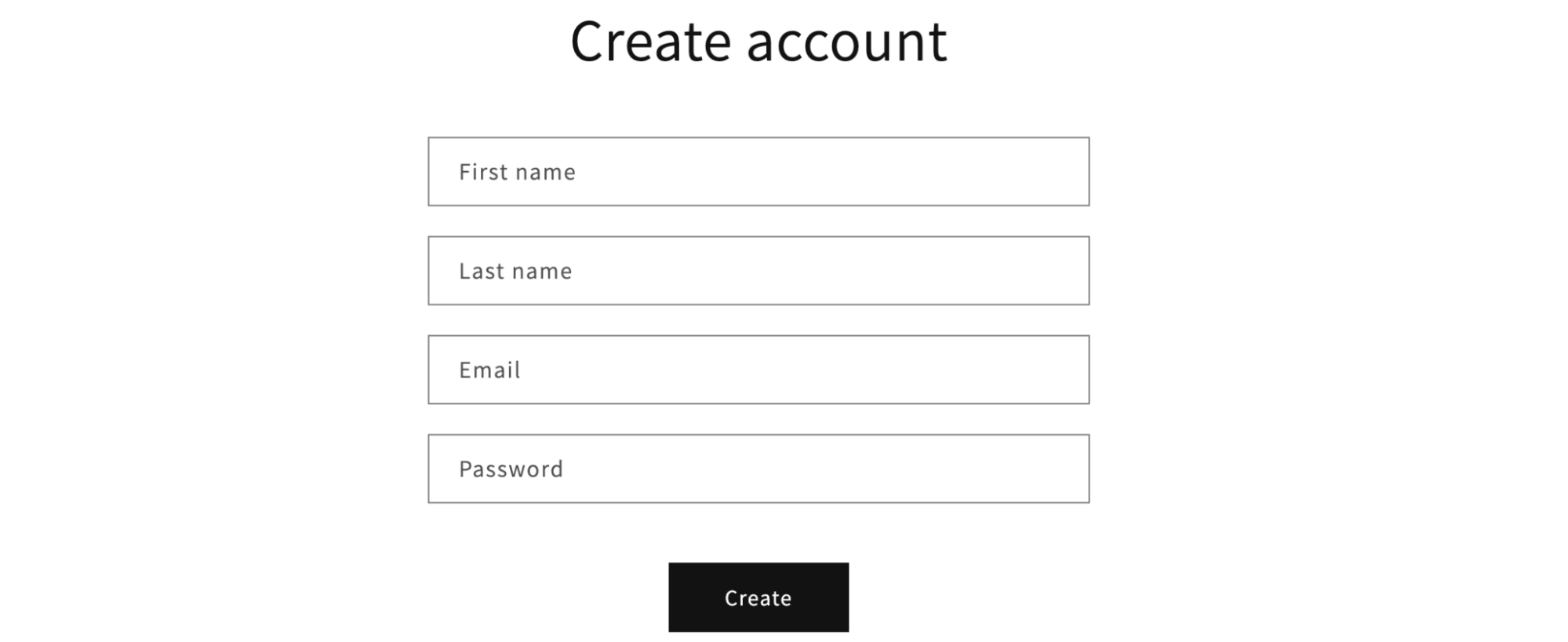
Step 3: Choose Products and Suppliers
Click on “Add product” to add products to your website. Then, you need to search for and select a supplier that provides products suitable for you. Consider choosing a reliable, professional supplier, and don’t forget to negotiate prices and shipping methods. This step is crucial as it directly impacts your store’s revenue and profits.

Step 4: Design Your Website
Once you’ve selected your products and suppliers, you need to organize and design your store. The Shopify Theme Store offers a wide range of website design templates, both free and paid, for you to use.
To edit your store’s appearance, go to “Online store,” then select “Theme.” Once you’ve chosen a theme you like, click “Publish” to activate it.
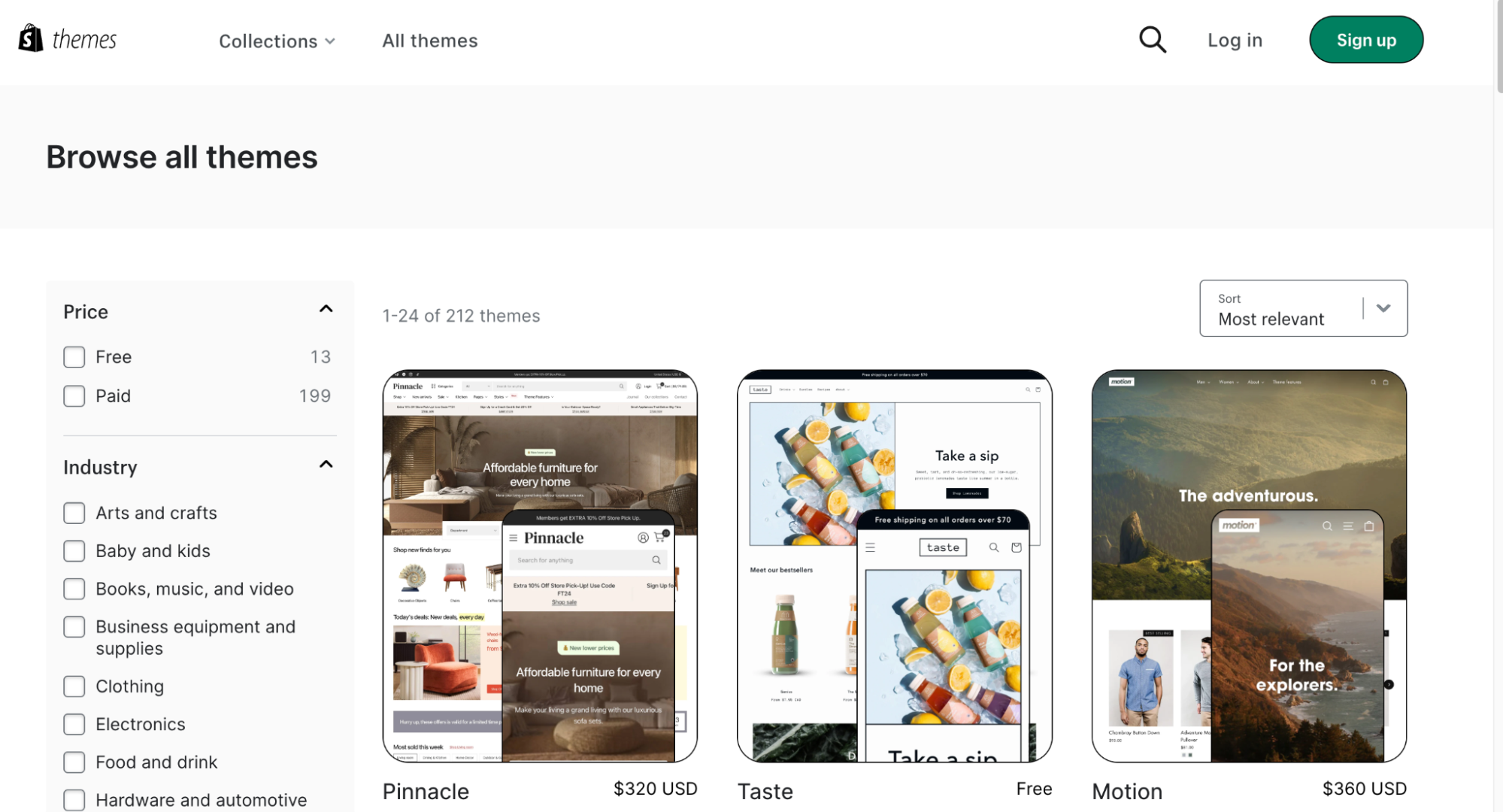
>>> Read more: 10 Best Shopify Themes for Dropshipping
Step 5: Register a Domain with Shopify
To register a domain with Shopify, go to Settings > Domains, then enter the domain name you want to purchase. The page will display the domain you want to buy along with suggestions for other domains and their respective prices. After that, click “Buy” next to the domain you wish to purchase.
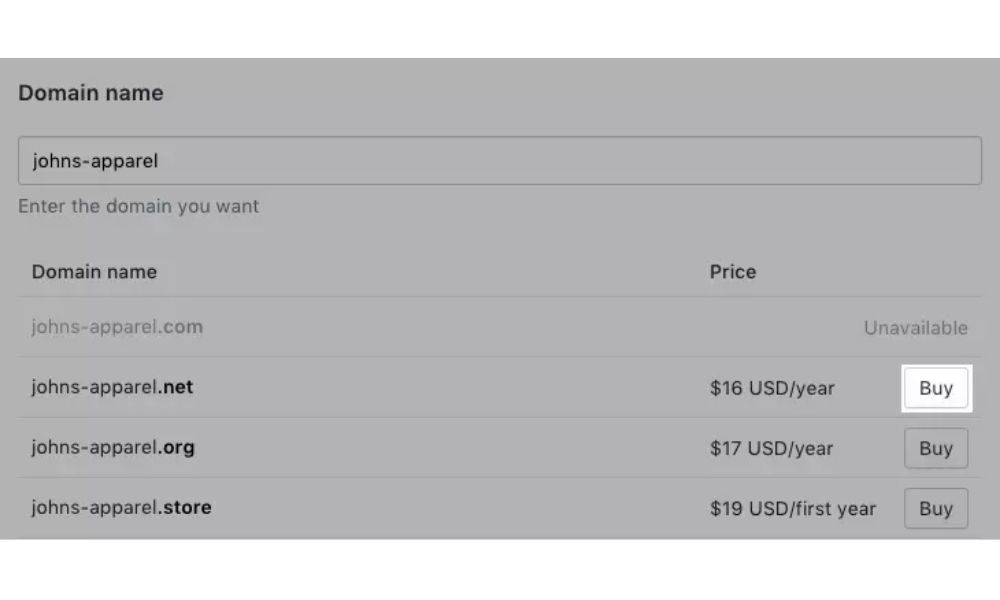
After a successful payment, go to “Domain settings” and select the domain you purchased as the default URL.
Step 6: Create Product Pages
Once your website design is complete, you need to create product pages. Here, your products will be displayed with all the necessary information, including product images, descriptions, prices, and more.
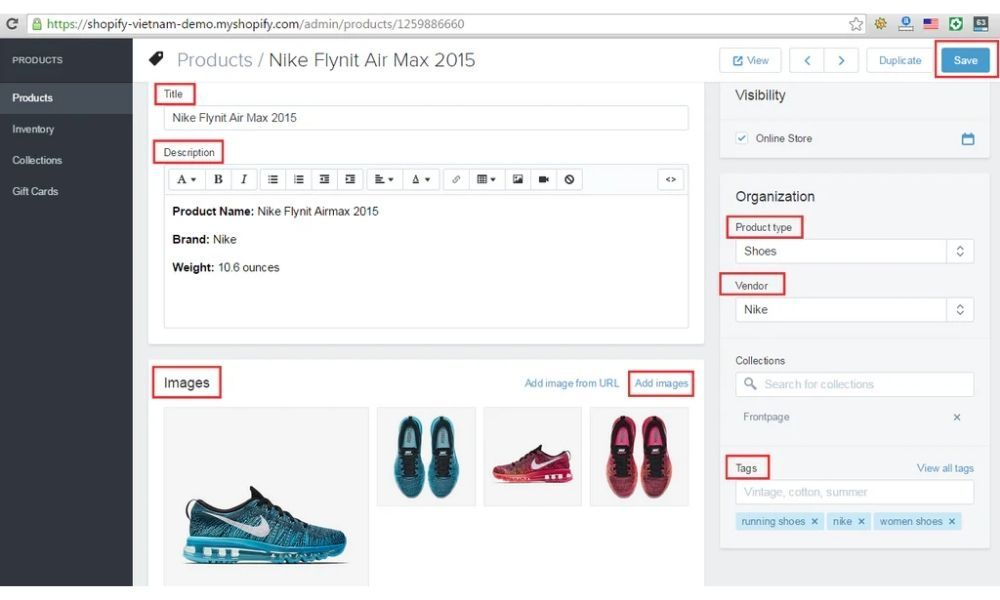
Step 7: Add Discount Codes
Discount codes are a great strategy to encourage purchases, so you might consider creating a few discount codes. To add a discount code to your store, go to “Discounts,” then name and create your discount code. If you prefer not to, you can skip this step.

Step 8: Set Up the Checkout Page
The checkout setup is the final step you need to complete.
First, set up the payment gateway by clicking on “Settings” > “Payments.” Then select the “PayPal Express Checkout” method and click “Activate.” A screen will appear asking you to log in to your PayPal account (if you don’t have a PayPal account, you should register for one). Log in to your account, then click “I Give Permission” to connect with your PayPal account.
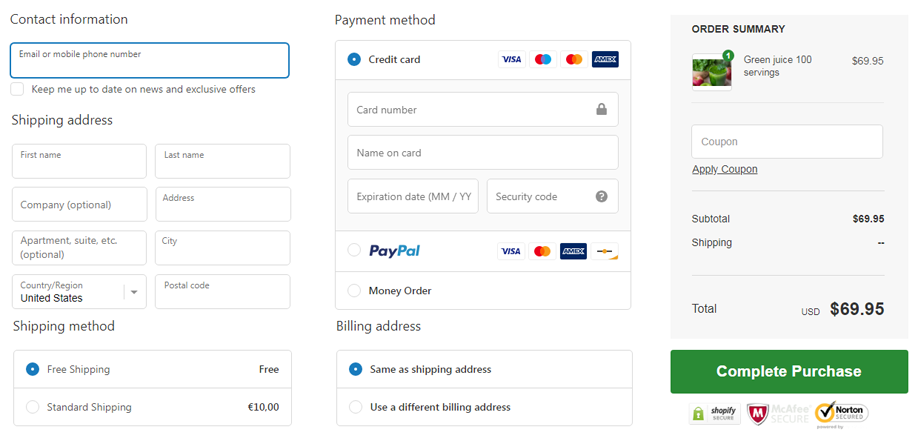
Effective Marketing Strategies for Shopify Dropshipping
Marketing your store is crucial to running a successful dropshipping business. It’s not just about profits; you must allocate enough time to develop an outstanding marketing strategy in this competitive business model.
Here are some Shopify dropshipping marketing strategies to get you started.
1. Social Media
Social media is like your best friend when it comes to promoting your dropshipping products. It helps you build trust, spread the word about your products, and ultimately bring in customers.
You don’t need to be present on every social media platform. Choose platforms based on your audience. For example, use Instagram and Pinterest for fashion products.
Be practical and helpful, not spammy. Use hashtags and tags wisely to get noticed. Track what’s working with analytics, and don’t forget to promote your new content and user-generated content.
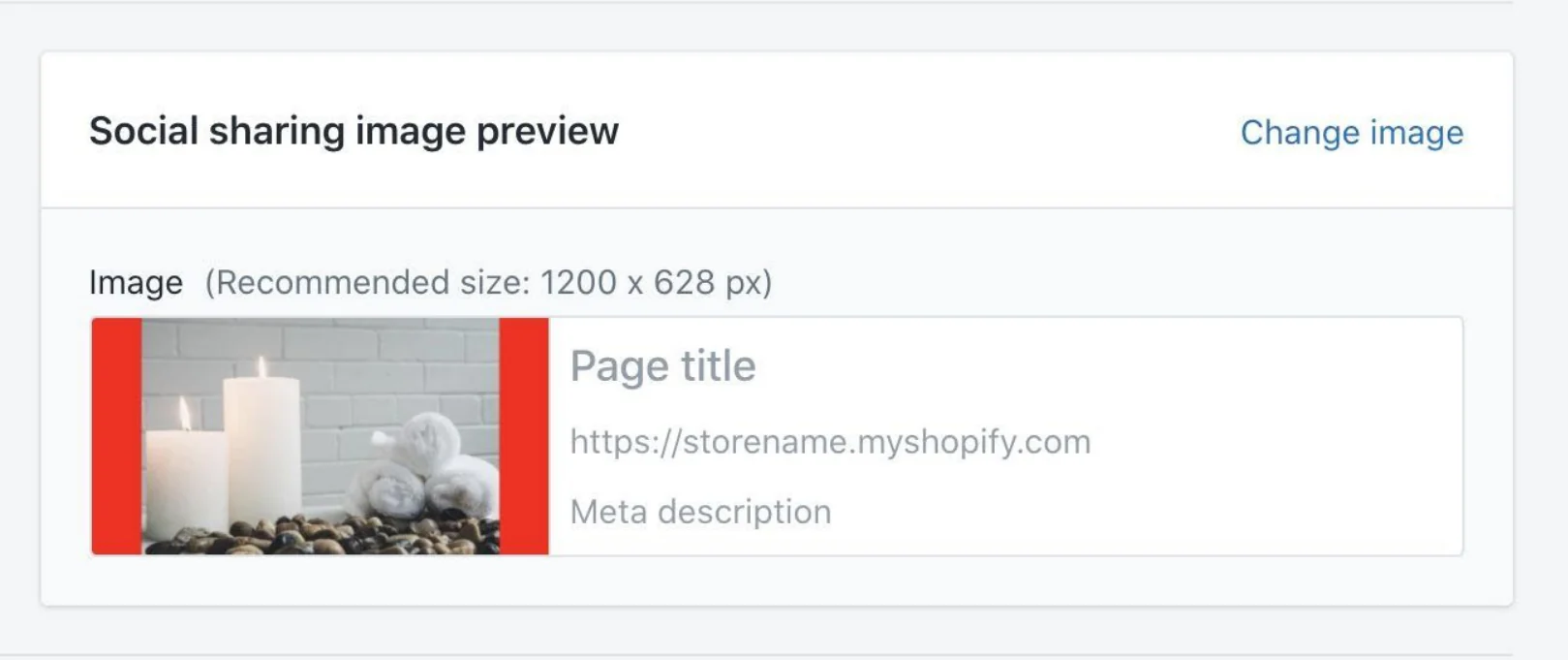
2. Blogging
One of the advantages of Shopify is that you don’t need a separate website dedicated to blogging. Shopify has a built-in blogging feature.
Here are some helpful tips to create a valuable blog for your Shopify dropshipping business:
- Find Low-Difficulty Keywords: Use Google Trends and Ahrefs to identify low-difficulty, high-search-volume keywords so your blogging efforts pay off early on.
- Create Educational Guides: Develop guides and tutorials that address common customer questions.
- Optimize Content: Ensure your blog content is optimized with relevant keywords.
- Feature Dropshipping Products: Highlight your dropshipping products through detailed spotlights and reviews.
- Share Industry Insights: Offer insights on trends and industry updates to establish thought leadership.
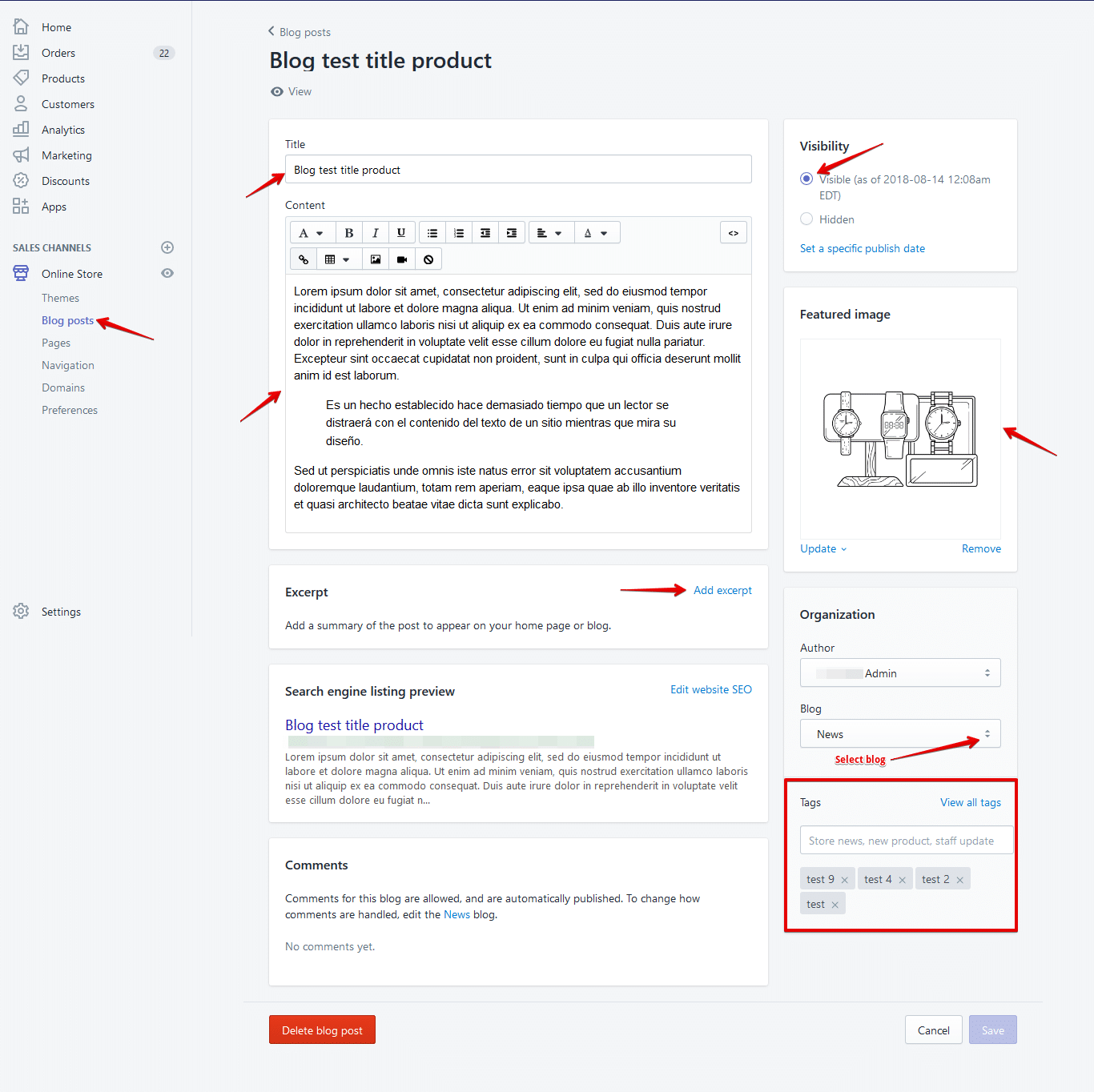
3. Running Ads
You can significantly boost sales for your Shopify dropshipping store by running ads on platforms and search engines like Google, Bing, and Facebook.
For example, Jordan Bown, a Shopify dropshipper, earned millions of dollars through Video Ads.
Key Notes for a Successful Dropship on Shopify Business
Achieving success with your Shopify dropshipping business requires careful attention to several important factors outlined below.
Choose a diverse supply chain
To ensure a smooth supply of goods, sellers should have 2 to 3 backup suppliers. Additionally, it’s important to select products with high potential or broad market appeal to implement effective selling strategies.
Ensure Your Products Are Competitively Priced
Setting the right price for your products is crucial to driving sales. Competitive pricing can make your products more appealing and increase your conversion rates. Always consider your target market and competitors when determining your prices to ensure you attract and retain customers.
Create High-Quality, Engaging Content
Content is key when it comes to capturing your audience’s attention. High-quality content not only highlights the value of your products but also builds trust with your customers, motivating them to complete a purchase. Focus on delivering content that speaks directly to the interests and needs of your target market.
Integrate Marketing Tools for Greater Reach
Usin marketing tools is essential for expanding your reach and boosting sales. By integrating tools like email marketing, social media campaigns, and search engine optimization, you can connect with a larger audience and drive more traffic to your store. These tools can help you stay competitive and grow your business.
Conclusion
Shopify Dropshipping is a convenient and effective method for running an online business. If you’re looking for a way to sell products online, consider trying Shopify Dropshipping.
As someone who has seen the potential of this model, I can confidently say that this Shopify dropshipping guide will help you get started and maximize your chances of success.


